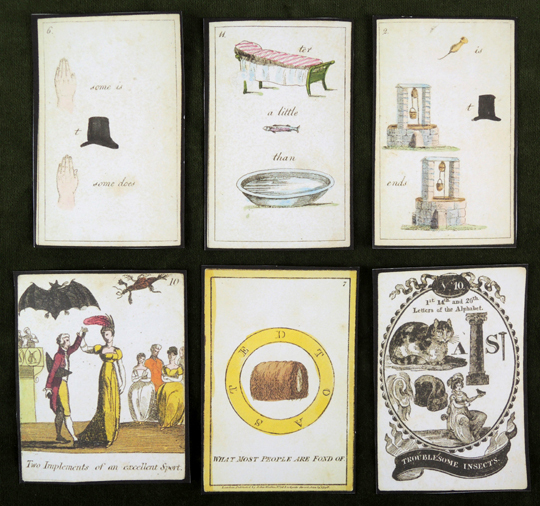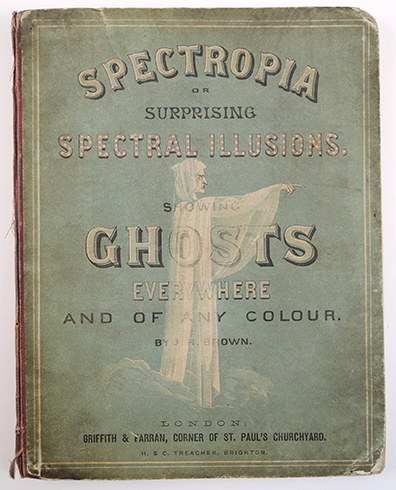 Last Halloween season we took a stroll through our special collections pumpkin patch. Today, we’re looking for ghosts! And we found them in this amazing optical illusion book titled Spectropia; or, Surprising Spectral Illusions. Showing ghosts everywhere, and of any color. Published by J.H. Brown in London in 1864, the book teaches the concept of “the persistency of impressions, and the production of complementary colours on, the retina.”
Last Halloween season we took a stroll through our special collections pumpkin patch. Today, we’re looking for ghosts! And we found them in this amazing optical illusion book titled Spectropia; or, Surprising Spectral Illusions. Showing ghosts everywhere, and of any color. Published by J.H. Brown in London in 1864, the book teaches the concept of “the persistency of impressions, and the production of complementary colours on, the retina.”
The illusion is very simple. In the image above, stare at the small black dot by the ghost’s neck for 20-30 seconds. Then look away at a white wall or ceiling. Her ghostly image will appear in your vision, except in different colors (in this case green wreath, blue ghost)!
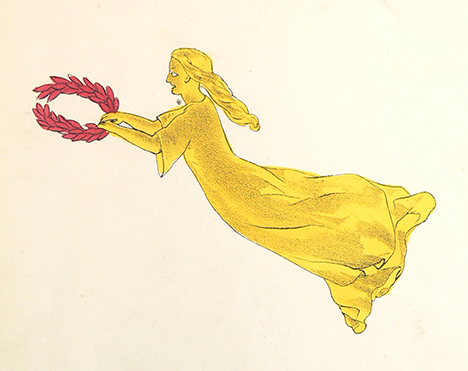
Scientifically speaking, this is called an afterimage. The color receptors in your eyes work in pairs (red/green, blue/yellow, etc.). When you stare at the drawing and one color fatigues your receptors, the other receptor will step in and dominate for a bit.
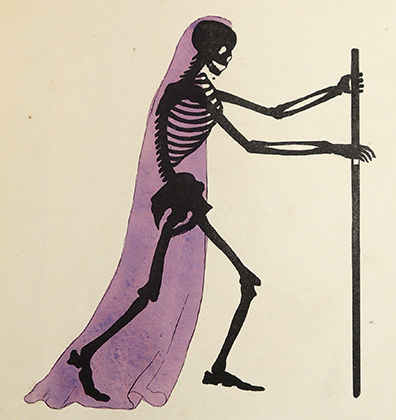
The book has a very lengthy description of this concept, as well as viewing instructions that include having the “gaslight turned low.”

Spectropia also has a disclaimer at the beginning: “As an apology for the apparent disregard of taste and fine art in the plates, such figures are selected as best serve the purpose for which they are intended.”
I wish they might have reprinted the disclaimer before THIS image, which honestly is going to haunt me clear through December:
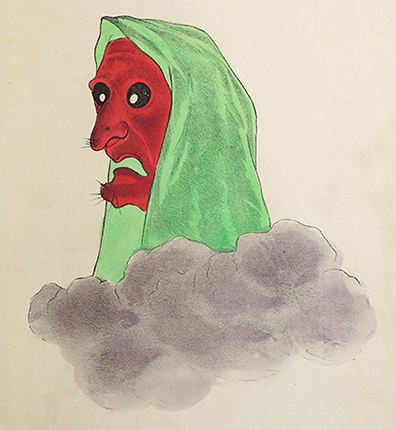 The book concludes with a grand finale image that is not a ghost, but a rainbow! Definitely try this one, because it is so cool to see the colors flip in the afterimage!
The book concludes with a grand finale image that is not a ghost, but a rainbow! Definitely try this one, because it is so cool to see the colors flip in the afterimage!

Looking more more optical spooky fun? Try making our tabletop Pepper’s Ghost illusion!
Images from Spectropia; or, Surprising Spectral Illusions. Showing ghosts everywhere, and of any color. J.H. Brown, London. Griffith and Farran.1864. Cotsen Children’s Library, Department of Special Collections, Princeton University Library.

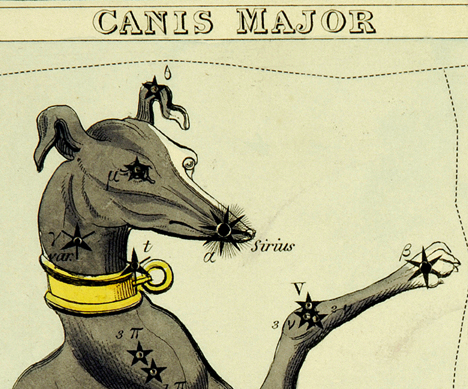 Thought these might come in handy for your summer reading “Universe of Stories” theme…with a historical twist!
Thought these might come in handy for your summer reading “Universe of Stories” theme…with a historical twist!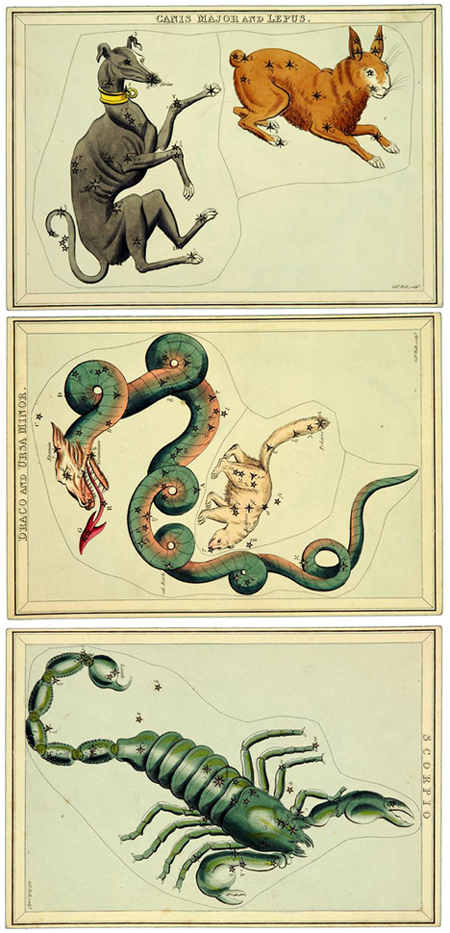 Did you catch that the 3 cards I pulled from the deck are Harry Potter references? Sirius, Draco, and Scorpius, respectfully. So a little stargazing, a little history, a little literacy, and an awesome bookmark for your summer reading books to boot.
Did you catch that the 3 cards I pulled from the deck are Harry Potter references? Sirius, Draco, and Scorpius, respectfully. So a little stargazing, a little history, a little literacy, and an awesome bookmark for your summer reading books to boot. Calling all consulting detectives…grab your sparkle stem magnifying glass and examine this most intriguing collection of 18th and 19th century puzzle cards. And, while the individual man is an insoluble puzzle, the answers to these cards are at the end of the post (and you can print a set of your own)!
Calling all consulting detectives…grab your sparkle stem magnifying glass and examine this most intriguing collection of 18th and 19th century puzzle cards. And, while the individual man is an insoluble puzzle, the answers to these cards are at the end of the post (and you can print a set of your own)!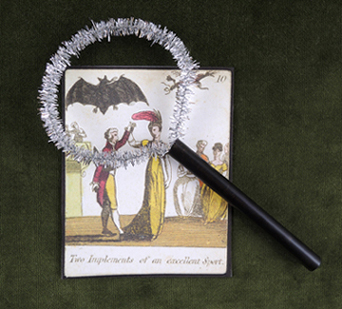 And what of those curious cards? They are reproductions of 18th and 19th century rebus puzzle cards in our library’s
And what of those curious cards? They are reproductions of 18th and 19th century rebus puzzle cards in our library’s 